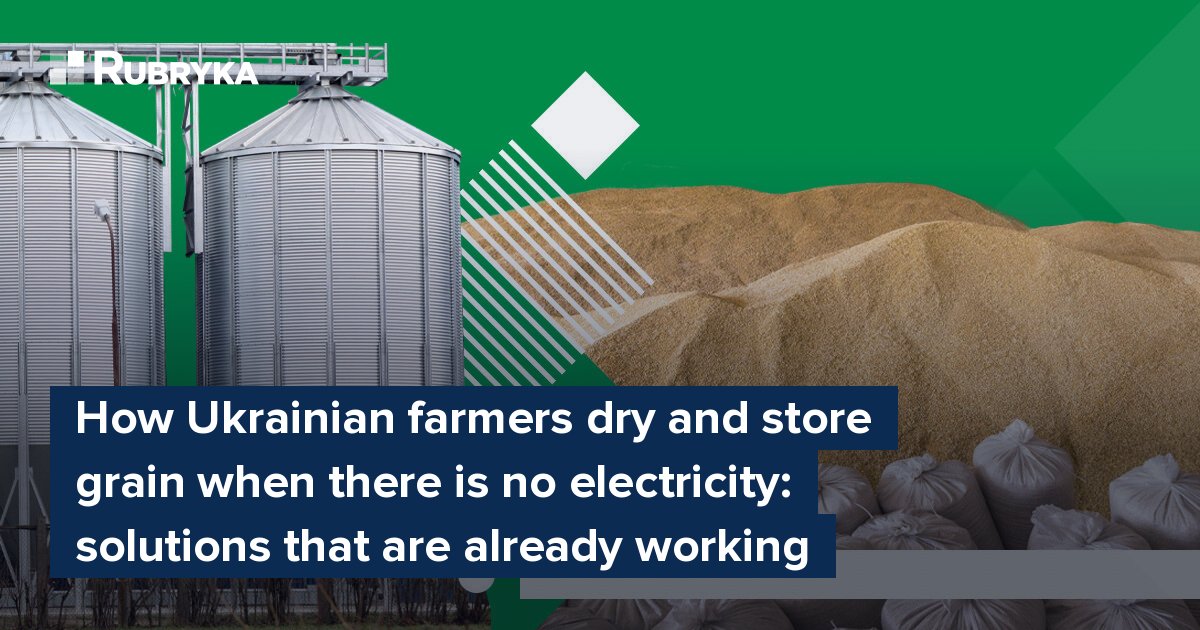
What is the problem?
This year, each new stage in the production of grain products is a new challenge for agrarians and farmers. In the spring, the fields had to be sown despite the shelling, in the summer — farmers had to find new ways to cultivate despite the shortage of fertilizers, in the fall — grain had to be collected despite fields being mined, and now the grain storage itself became a new problem.
It would seem that the challenges should have ended, but the enemy decided to put pressure on the government, the population, and the industry, destroying the power transmission nodes, and leaving people without electricity. Ordinary consumers, hospitals, and enterprises suffer from a lack of electricity. And, as it turned out, elevators do as well. Leaving elevators without electricity means risking future harvests and products we could consume and export. We will tell you why.
Why do granaries need electricity?
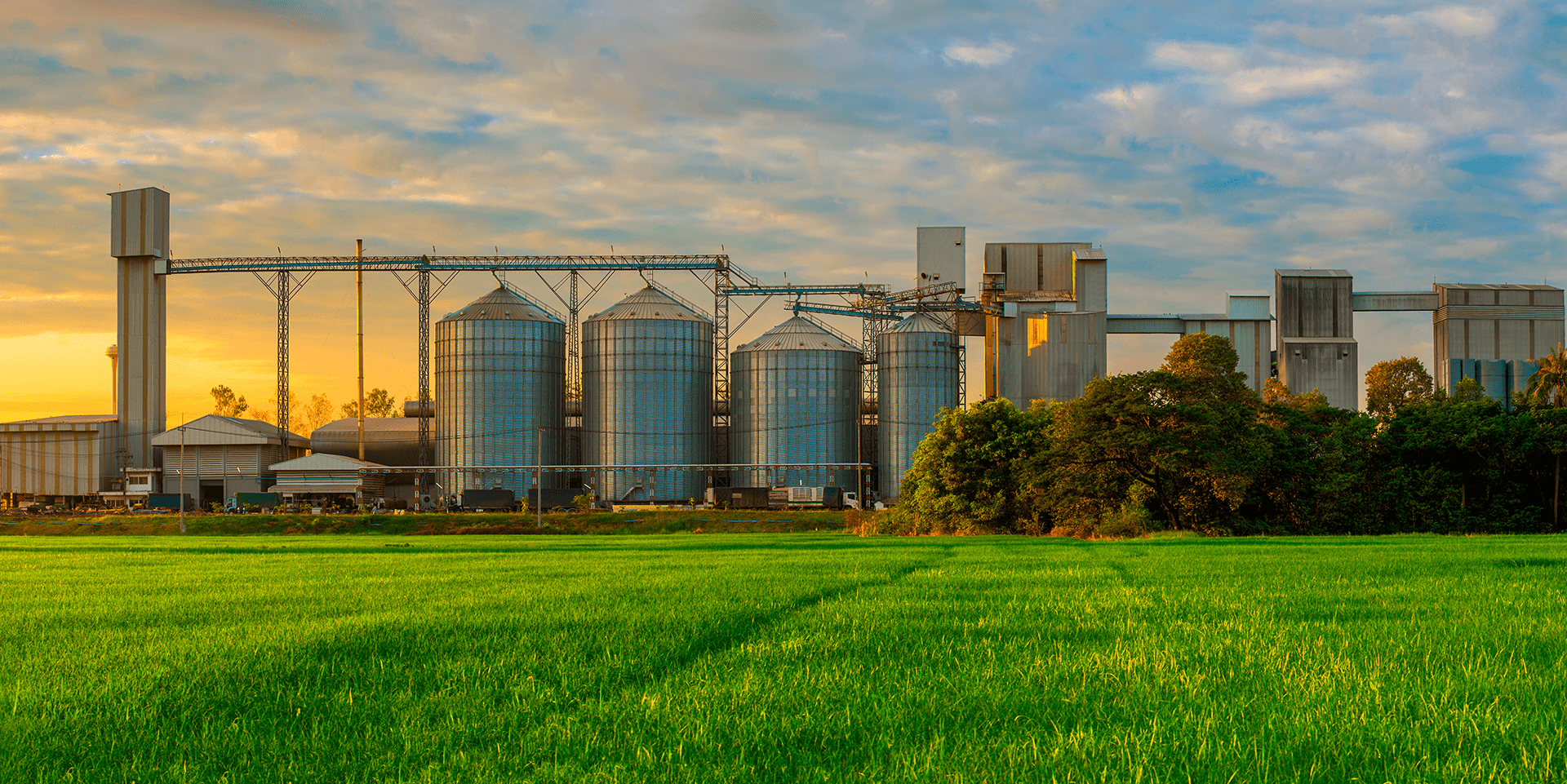
To understand this, it is worth knowing the complex physiological and biochemical processes that occur in grain during storage and the factors that determine them. It's actually an exciting process, so we'll explain.
No matter at what stage of maturity the grain was collected, ripening processes occur during storage, which proceeds quite slowly. Even after harvesting, the grain continues to live, "breathes," and intensively releases moisture. An increase in humidity to an indicator of more than 13% in the grain mass accelerates "breathing," which requires oxygen. A process similar to alcoholic fermentation begins, and the grain spoils. At high temperatures and humidity in the granary, other processes also begin: mold organisms and bacteria develop.
For the grain to be stored normally, it must first be dried, then not allowed to heat up. In dry grain, which is well-ventilated and has the appropriate temperature for low humidity, physiological processes occur extremely slowly, and the grain is in a dormant stage. Drying and ventilation are performed by elevators.
What is the solution?
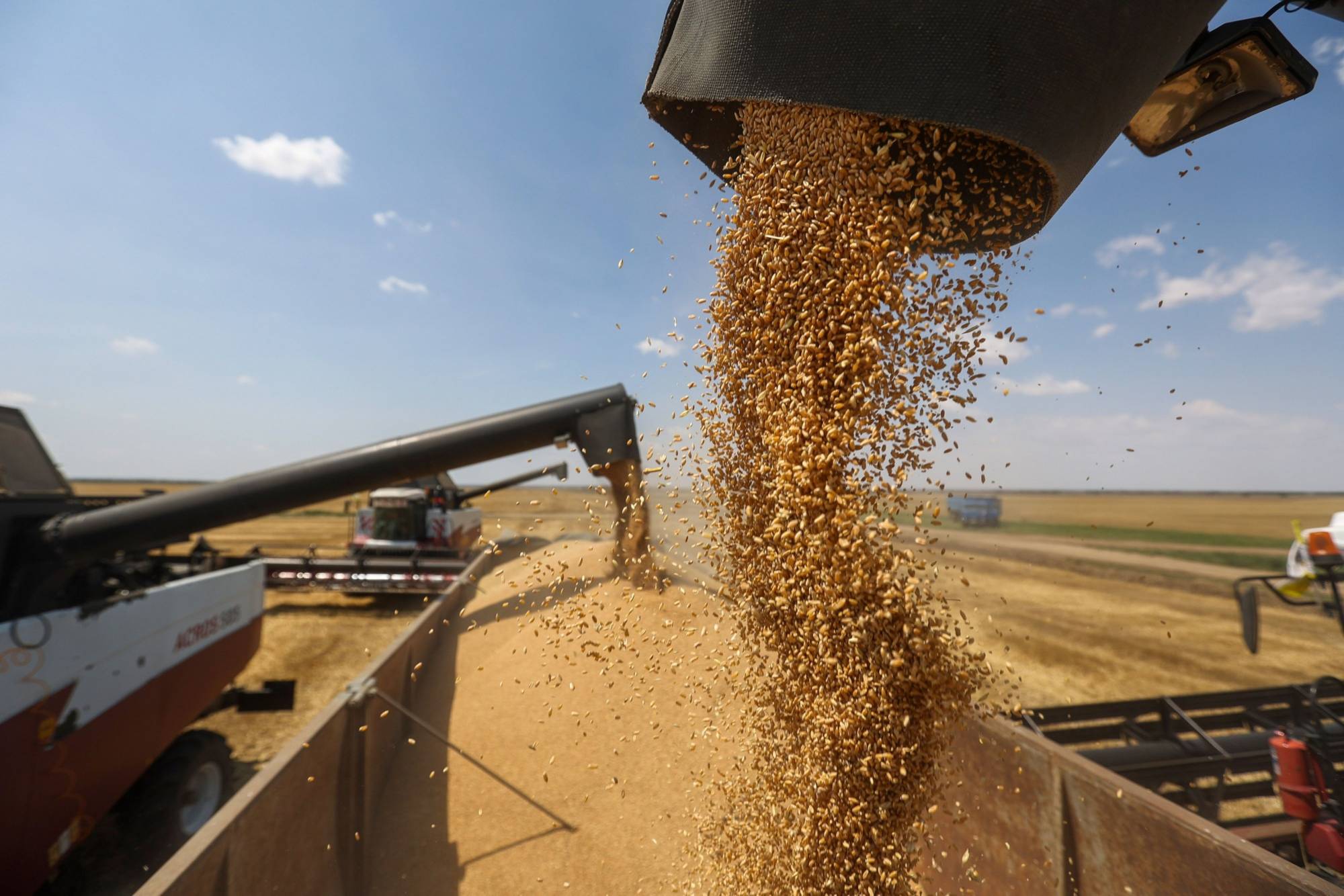
Some cultures can be stored without ventilation
The issue of the critical period of grain storage without ventilation is very diverse. Conditioned grains — wheat, barley, and corn — will be able to wait quite calmly for quite a long time without ventilation and movement. The most important thing to ensure quality and avoid risks is to store only conditioned, well-dried and clean grain. In this case, it can be stored without problems for 2-3 months, but if the grain is not dried, the self-heating process can begin after 10-14 days.
It's a good idea to have a generator, even if it's not a powerful one
Of course, elevators can be connected to generators. About 5,000-12,000 kWh of electricity per day is required for the normal operation of elevators. Therefore, the necessary generators must be very powerful, they are very expensive, and this method is not suitable for everyone. But even less powerful generators can maintain grain quality, and here's how.
When the power goes out, grain dryer fans are turned on at the elevators, powered by generators, to cool the grain and stop its "breathing" processes. When electricity comes on, the grain is reheated, and drying continues.
This method is already used in the Kyiv region at the elevators of the MHP group of companies. At the same time, Oleksandr Kasyan, the chief energy engineer of the Andriyashiv and Yahotyn elevators of "MHP," claims that this method helps preserve grain quality during short-term power outages. He also clarified that for the purpose of insurance, the MHP elevators centrally ordered generators.
In the absence of a generator, grain can be dried in a hangar. At the same time, it is better to store grain in ZOG elevators.
When there is a danger of power outages for a long time, but there is no possibility to use generators, the best place to store grain is warehouses or hangars, advises Tetyana Podvyacheva, Deputy Quality Director of Bilozavodsky Elevator.
It is better to choose old ZOG elevators, those consisting of prefabricated reinforced concrete structures. As Podvyacheva explained, thick concrete walls prevent condensation from forming due to temperature changes. If the concrete has frozen well and the grain has cooled down to at least 2-4 degrees, then the walls of the elevator will warm up gradually as the temperature rises, and there will be no condensate that appears in metal silos (a silo is a type of grain storage that we are usually used to seeing in in the form of a vertical cylinder, usually metal). Condensation can appear in metal granaries even in winter, at -15 — provided it is sunny outside. So if it is not possible to ventilate or transfer the grain, the ZOG elevator is the best solution.
ABL and open doors are also solutions
According to Podvyacheva, grain can be improved in horizontal warehouses with the help of an ABL (Auger bucket loader) — a diesel engine powers such a device. There is another way to dry the grain, which Ms. Podvyacheva advised: simply open the door in the hangar because the height of the mound in the hangar is about 5 meters, but in the silo, it is about 40.
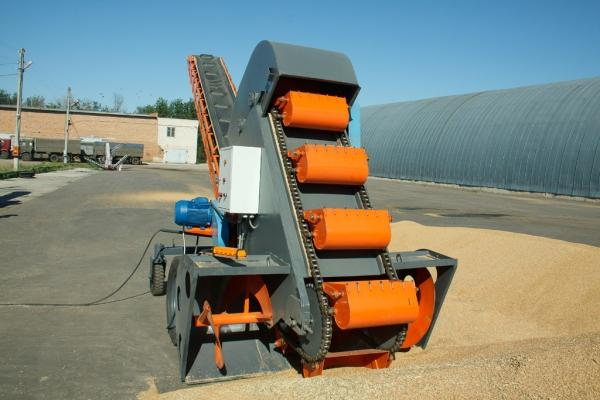
ABL is a device for drying grain
Polymer sleeves
If the grain dryer does not work due to the lack of electricity and there is a risk of losing part of the grain, it is possible to "preserve" corn in polymer sleeves for a month or two, depending on the initial humidity. The "Volyn-Zerno-Product" company has been practicing this method for several years, and in this way, they manage to dry all batches of corn brought to the elevator.
"For the third year in a row, we put corn with 20% moisture in the sleeves, and we have a month or two when the grain dryer is free. If there is no electricity, and the corn leaves the fields, you can use sleeves. Electricity is not needed there: it arrives and is immediately loaded into bags," explained Oksana Mandryka, the company's chief technologist.
Corn with a moisture content of 25-28% can lie in sleeves without deterioration of quality for up to a month. The lower the percentage of moisture, the more time they will have in the elevator to dry the grain and store it for long-term storage.
The method of storing grain in sleeves was used at the elevators of the AGROTRADE Group. Farmers there are preparing for the consequences, which may appear due to possible difficulties with exporting grain. Therefore, to be able to receive the entire amount of grain, the storage capacity of grain in sleeves was increased by 100-120 thousand tons.
Learn more about grain storage
To share the experience of the stable operation of elevators during the war, The Ukrainian Farmer magazine is organizing the All-Ukrainian practical forum "Your Own Elevator" in Lviv on December 6.
Elevator operators from all over the country are registering for the event so that forum participants can learn first-hand about elevator management in this difficult time for Ukraine. The event organizers promise that within the All-Ukrainian practical forum "Your Own Elevator," the participants will share their experiences, in particular:
- issues of optimization of work and costs of elevators during a full-scale war will be considered;
- the forum will give advice on how to work in the event of a power outage and the possibility of combining different types of fuel in these conditions;
- will discuss the issue of preserving grain quality.
You can register for the All-Ukrainian practical forum "Your Own Elevator" by following the link.
Will it definitely work?
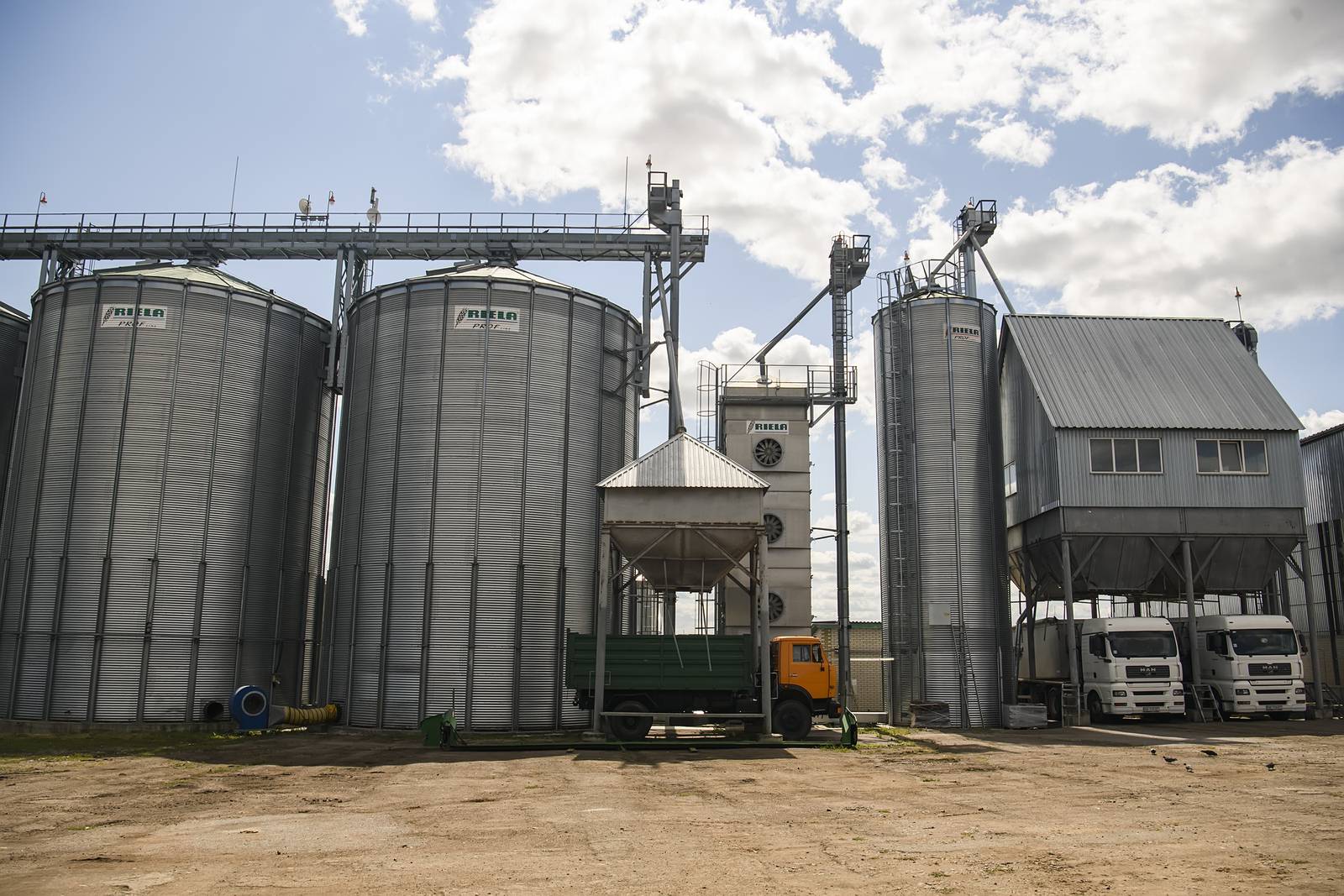
As we can see, there are enough methods to dry the grain, but what happens if one of them does not work and the grain still spoils?
It does not cause significant damage to the environment. Agrarians distinguish several categories of spoiled grain. Sometimes, if some pests damage the grain, it is simply mixed with good grain and processed into flour of a lower grade — such flour has a lower amount of gluten. More severely spoiled grain is sold not for flour but for creating fodder — it is not suitable for flour precisely because of the absence or very low amount of gluten (baking products using such flour is problematic), but it still contains a nutritional value for animals. Totally spoiled grain is burned; this is a standard practice that farmers have used for many years. However, of course, this option will not be ideal for the environment — as we have already written before, burning poses a direct threat to air quality.
But we hope that the solutions that farmers have already found, and those that will be found, will be useful and work as they should, and food security will remain protected.


